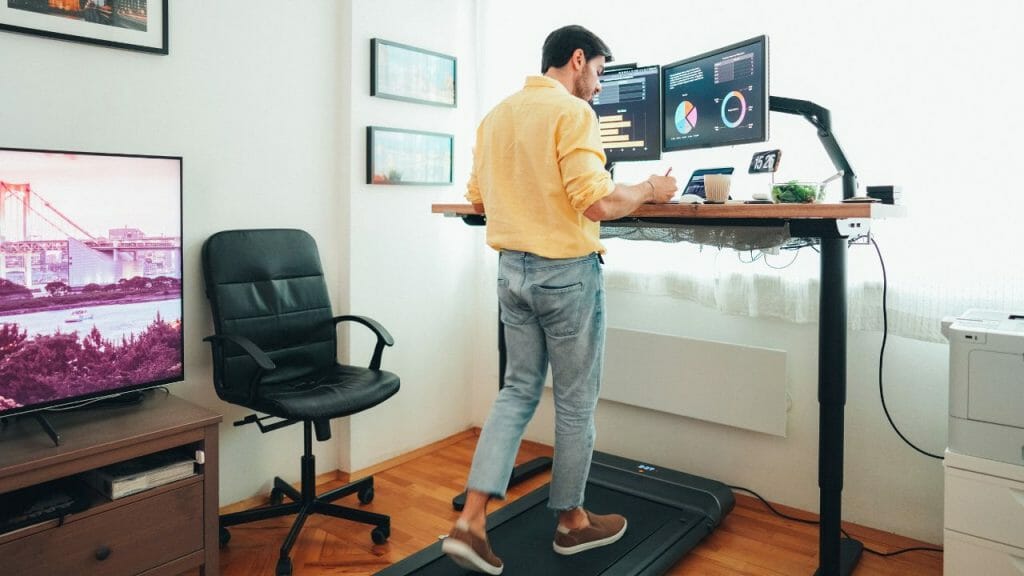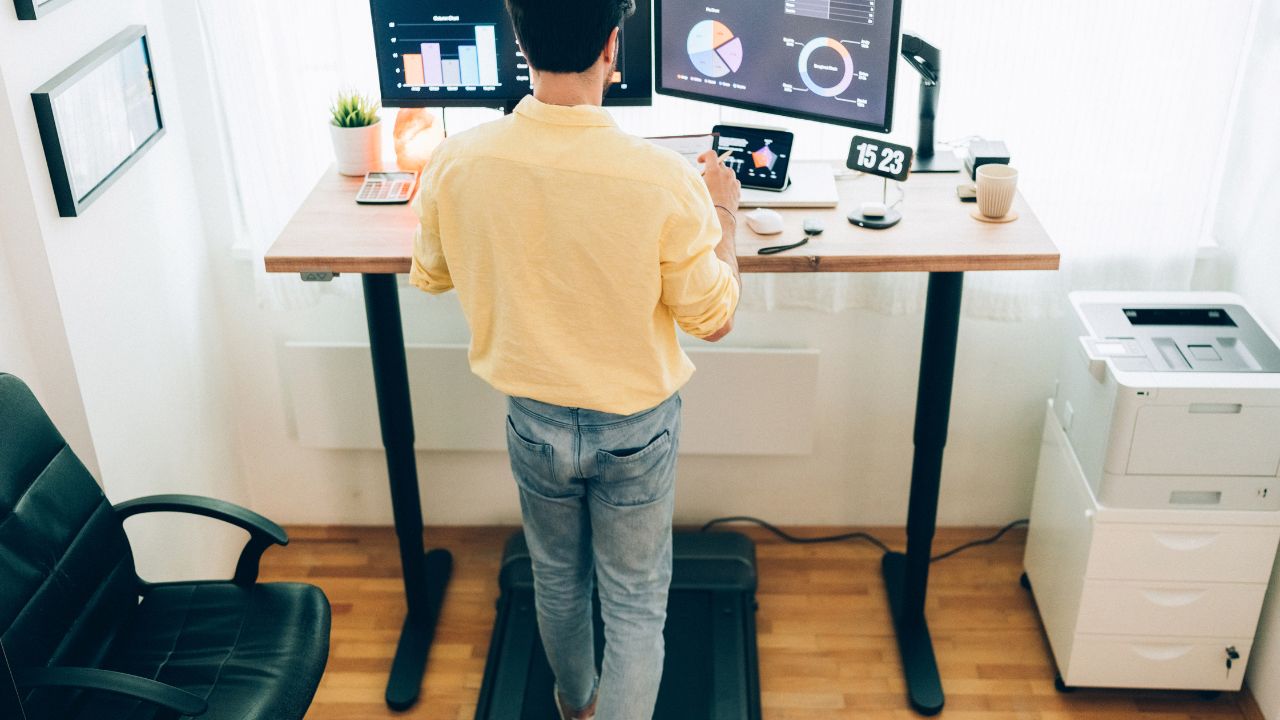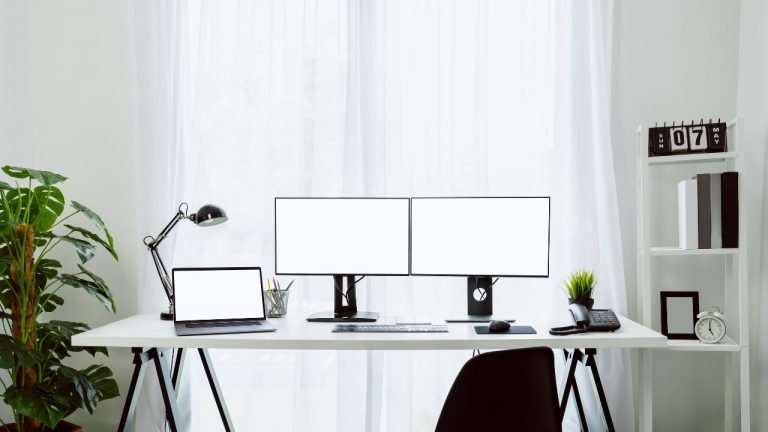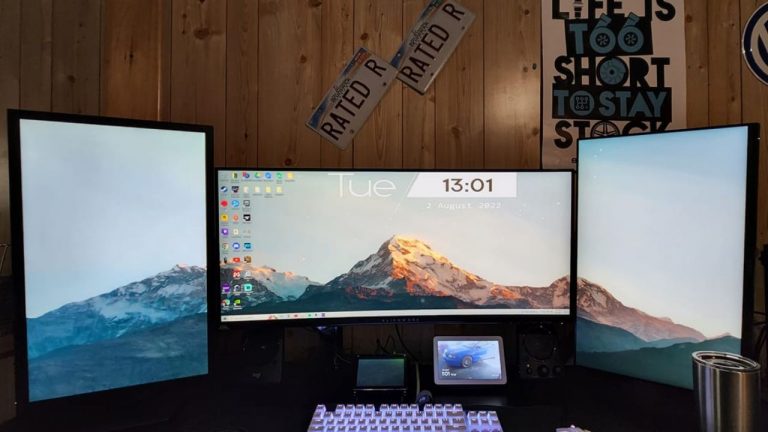Are Dual Monitors Bad For Your Neck?
These days, most remote workers are leaning towards dual monitors for increased productivity and a better viewing experience. According to a survey, 42% of remote workers prefer dual monitors as part of their workstations. But most of the users end their day with stiffness, discomfort or neck pain. So are dual monitors bad for the neck or health?
If dual monitors are not properly positioned, you will have to move your neck and head continuously to see the screens. Working hours in such awkward posture and body alignment can put pressure on the muscles in the neck and result in neck pain. Setting up monitors at the correct height, distance and angle will ensure a neutral posture and reduce measles strain, neck pain and discomfort.
In today’s article, I’m going to discuss dual monitors’ impact on the neck and how you can set up your dual monitor to avoid neck pain and other health problems. Whether you are a tech-savvy or remote worker, this post is going a treat for you.
So let’s get started!
Are Dual Monitors Bad For Neck?
Neck pain is a common problem among remote or home-based workers. This problem is even worse among dual monitor users. Actually, the problem is not with double or multiple monitors, it’s how you setup them.
Most of the users place their first monitor directly in front of them while their second monitor sits a bit off to the side. As they turn their head to focus on the second screen, the upper portion of the body twist in that direction. This puts continuous pressure on the neck and back throughout the day.
In the beginning, it will give just a bit of uneasy feeling and muscle tension. But if you continue working in poor posture it can lead to chronic neck pain and musculoskeletal disorder.
Working for a long time without any breaks is also a perfect recipe for neck pain. It is best to take a 5 minutes break after every 30 minutes of work. You can try quick office exercises like triceps dips, cervical retraction, side stretching and shoulder rolls in the break.
The good news is you can easily reduce the chances of neck pain and other health problems just by making some changes to the desk. You can consider a standing desk for better posture.
So are dual monitors bad for your neck? Nope, but the wrong monitor setup and working posture are definitely worst for the neck, eyes, shoulder and other parts of the body.

7 Tips To Setup Dual Monitors To Avoid Neck Pain
Proper monitor placement is the key to healthy working posture and focused mind. Here are some tips for setup dual monitors to avoid neck pain and maintain a healthy working posture:
- If you use both screens equally, place the monitors in a V shape. Your eyesight should be directly on the “V” point, middle of two screens. On the contrary, if you mostly use the first screen (60-80%) then place the first monitor slightly off-center of your eyes and the second monitor at a 30-degree angle beside the first one.
- This will help you to view both screens without moving your head and neck and maintain a neutral neck position.
- Set the monitors at a comfortable height. You can do a small test to determine the perfect height for your screen. Take your finger right and go straight out from the eyes to the monitor and see where your finger lands. If your eyes follow the first top third of your monitor, it is set to the perfect height.
- If your monitor is placed too close or too far away, you will put extra strain on your neck. The role of thumb is to keep an arm’s length distance between the eyes and monitors.
- However, the effectiveness of the rule may vary depending on the monitor’s size. If your monitors are middle-sized, the arm’s length rule is perfect. But if you are working with a large screen like 30 or 34 inches monitors, you will have to go slightly backward to comfortably view both screens and maintain a neutral position.
- Shoulder and arm position plays a big role in neck pain. Whether you are using a standing desk or a sitting desk, you will have to make sure your desk setup is supporting your shoulder and arm. Your desk should have armrests to help you work in a relaxed and neutral position.
- Take breaks in every 30 minutes. No matter how ergonomically you have set your desk, if you work for an extended period of time without any break, it will affect your health in the long run. You can do 5 minutes of quick exercise such as stretching your arms and neck. This will relieve your stiffness and discomfort.

Are Curved Monitors Better For Neck?
Curved monitors are two times better than flat monitors in terms of viewing experience and ergonomic workstation setup. Besides the aesthetic look, it has an impact on working posture.
When you work on two flat monitors you need to turn your neck more frequently to view different parts of the screens. This puts strain on the neck muscles and increases the chance of neck pain.
Here curved monitors come to the rescue allowing you to see the entire screen without moving your neck and head. Thus you can maintain a better working posture and reduce the chances of neck strain and musculoskeletal disorders.
However, these monitors are already in trend for giving less eye strain, better picture quality and more flexibility.
Wrap Up
After the above discussion, I think you are clear about the effect of dual monitors on neck health.
So it’s not about dual or multiple monitors but wrong monitor setup and working posture which is bad for the neck, eyes, shoulder and other parts of the body.
By following the above monitor setup suggestions you can reduce the chances of neck pain and maintain a healthy posture throughout the day.






